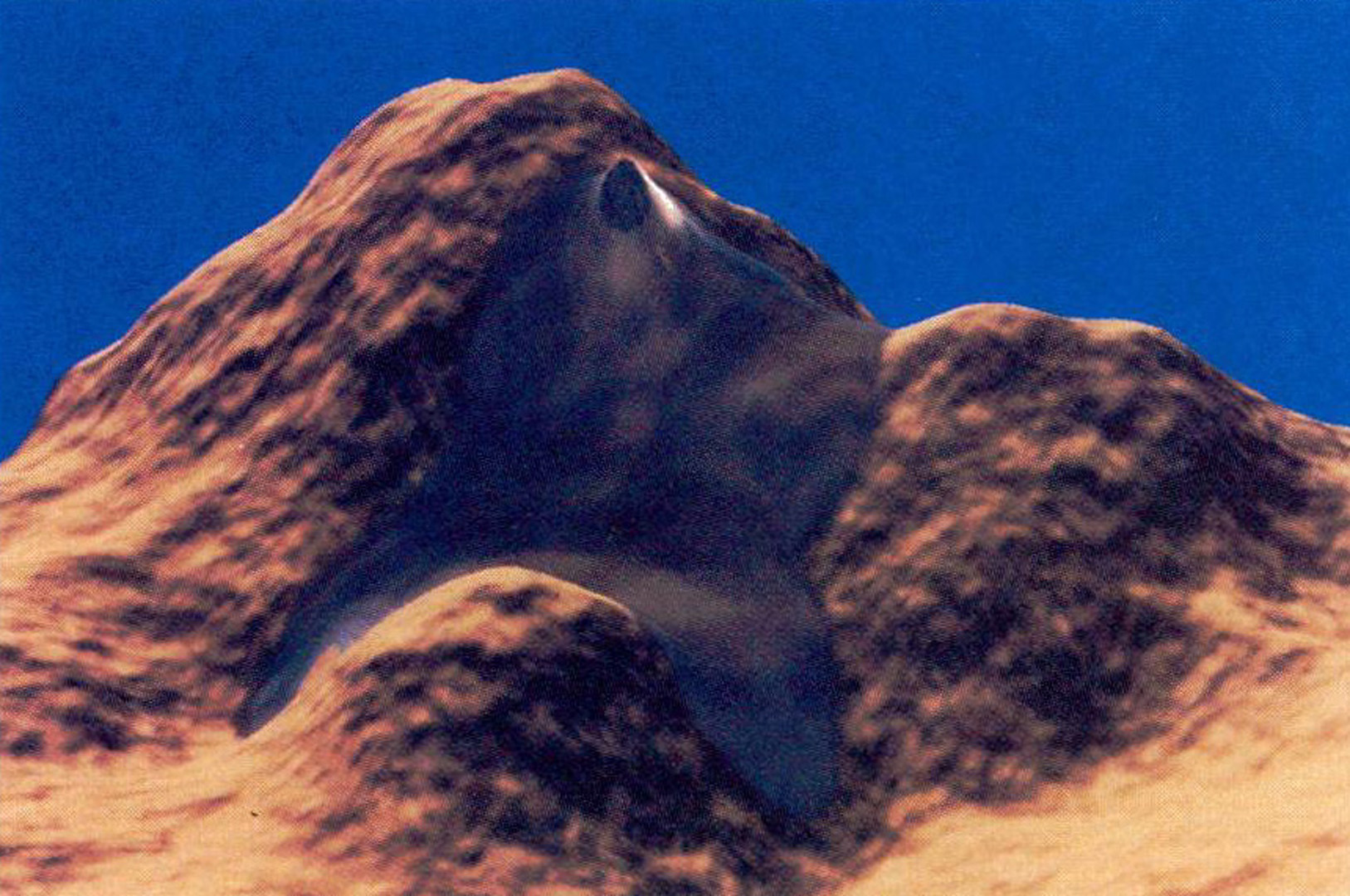“Rapid, stable fluid dynamics for computer graphics” by Kass and Miller
Conference:
Type(s):
Title:
- Rapid, stable fluid dynamics for computer graphics
Session/Category Title: Dynamics
Presenter(s)/Author(s):
Moderator(s):
Abstract:
We present a new method for animating water based on a simple, rapid and stable solution of a set of partial differential equations resulting from an approximation to the shallow water equations. The approximation gives rise to a version of the wave equation on a height-field where the wave velocity is proportional to the square root of the depth of the water. The resulting wave equation is then solved with an alternating-direction implicit method on a uniform finite-difference grid. The computational work required for an iteration consists mainly of solving a simple tridiagonal linear system for each row and column of the height field. A single iteration per frame suffices in most cases for convincing animation.Like previous computer-graphics models of wave motion, the new method can generate the effects of wave refraction with depth. Unlike previous models, it also handles wave reflections, net transport of water and boundary conditions with changing topology. As a consequence, the model is suitable for animating phenomena such as flowing rivers, raindrops hitting surfaces and waves in a fish tank as well as the classic phenomenon of waves lapping on a beach. The height-field representation prevents it from easily simulating phenomena such as breaking waves, except perhaps in combination with particle-based fluid models. The water is rendered using a form of caustic shading which simulates the refraction of illuminating rays at the water surface. A wetness map is also used to compute the wetting and drying of sand as the water passes over it.
References:
1. Max, N., “Vectorized proceedural models for natural terrain: Waves and islands in the sunset,” Proceedings of SIGGRAPH 81, (August 1981 ) 317- 324.
2. Peachy, D., “Modeling Waves and Surf,” Proceedings of SIGGRAPH 86, (August 1986), 65-74.
3. Foumier, A. and Reeves, W., “A Simple Model of Ocean Waves,” Proceedings of SIGGRAPH 86, (August 1986), pp 75-84.
4. Ts’o, P. and Barsky, B., “Modeling and Rendering Waves,” ACM Transactions on Graphics, 6, 3 (July 1987), 191-214.
5. Masten, G., Watterberg, P. and Mareda, I., “Fourier Synthesis of Ocean Scenes,” IEEE Computer Graphics and Application, 7, 3 (March 1987) 16-23.
6. Lewis, J., “Generalized Stochastic Subdivision,” ACM Transactions on Graphics, 6, 3 (July 1987) 167-190.
7. Perlin, K., “An Image Synthesizer,” Proceedings of SIGGRAPH 85, (July 1985) 287-296.
8. Schachter, B., “Long crested wave models,” Computer Graphics and Image Processing 12 (Feb. 1980), 187-201.
9. Miller, G. and Pearce, A., “Globular Dynamics: A connected particle system for animating viscous fluids,” Computer Graphics 13,3 (1989) 305-309.
10. Sims, C., “Particle Dreams,”{Video} Siggraph Video Review 38/39, ACM SIGGRAPH, New York, segment 42 (1988).
11. Patel, B. and Dvinsky, A., “The solution of the reynolds averaged Navier-Stokes equations in general curvilinear coordinates and its application to vehicular aerodynamics,” in Computers in Design, Manufacture and Operation of Automobiles, Murthy and Brebbia, Eds., Springer Verlag, Berlin (1987).
12. Kallinderis, Y. and Baron, J., “Adaptation methods for a new Navier-Stokes algorithm,” AIAA Journal, 27, 1 (January 1989)37-43.
13. Miyata, H. and Nishimura, S., “Finite difference simulation of nonlinear waves generated by ships of arbitrary three-dimensional configuration,” Journal of Computational Physics 60 (1985) 391-436.
14. Press, W., Flannery, B, Teukolsky, S. and Vetterling, W., Numerical Recipes: The Art of Scientific Computing, Cambridge University Press, Cambridge (1986).
15. Le Mehaute, B., An Introduction to Hydrodynamics and Water Waves, Springer-Verlag, New York (1976).
16. Crapper, G., Introduction to Water Waves, John Wiley & Sons, New York (1984).
17. Stoker, J., Water Waves, Interscience, New York, (1957).
18. Shinya, M., Saito, T. and Takahashi, T., “Rendering Techniques for Transparent Objects,” Proceedings of Graphics Interface, London, Ontario (June 1989).
19. Hall, R., Illumination and Color in Computer Generated Imagery, Springer Verlag, Berlin (1988).




